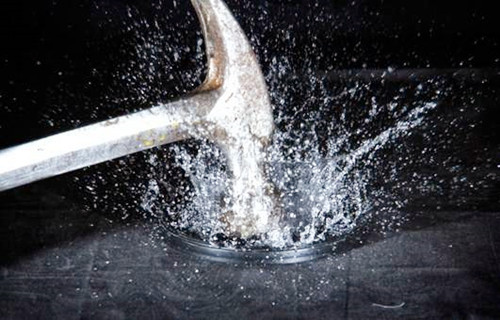What’s the Water hammer effect of valve?
When a valve is closed suddenly, the inertia of the pressurized flow creates a water shock wave that can cause damage to the valve or piping system. This is known as the “water hammer effect” in hydraulics or positive water hammer. On the contrary, the sudden opening of the closed valve can also produce water hammer effect, known as negative water hammer, which has a certain destructive force but is not as large as the positive water hammer.

The closing part is suddenly sucked into the seat when the valve is to close, it is called the cylinder blocking effect. This is caused by a low-thrust actuator that does not have enough thrust to remain close to the seat, causing the valve to suddenly close, creating a water hammer effect. In some cases, quick-opening flow characteristics of the control valve can also lead to the water hammer effect.
The water hammer effect is extremely destructive: too high pressure will cause the pipe and valves to breakage, and too low pressure will cause collapse, damaging valves and fixtures. It also makes a lot of noise, but the real damage to valves and piping are caused by mechanical failure. Because kinetic energy changes rapidly into static pipe pressure, water hammers can break through the pipe or damage pipe supports and joints. For valves, water hammer can produce severe vibration through the spool, which may lead to failure of the core, gasket or packing.
When the power is cut off and the machine stops, the potential energy of the pump water system will overcome the inertia of the motor and make the system stop sharply, which will also cause pressure impact and water hammer effects. To eliminate the serious consequences of the water hammer effect, any sudden pressure changes in the system must be prevented. In the pipeline need to prepare a series of buffer measures and equipment such as water hammer eliminator, water hammer pump station, straight water hammer pump.
To prevent pressure fluctuations, the valve should be closed at an even rate. For control valves that must be throttled when close to the seat, an actuator with a sufficiently large output thrust, such as a piston pneumatic or hydraulic actuator, or a special notch in the travel sleeve of a manually rotating operator, should be used to reduce or prevent cylinder blocking effects. Installing certain types of anti-surge equipment in the pipeline system can also reduce water hammer effects such as pressure relief valves or buffer drums. In addition, gas injection into the system reduces fluid density and provides some compressibility to handle any sudden fluctuations.



Leave a Reply
Want to join the discussion?Feel free to contribute!